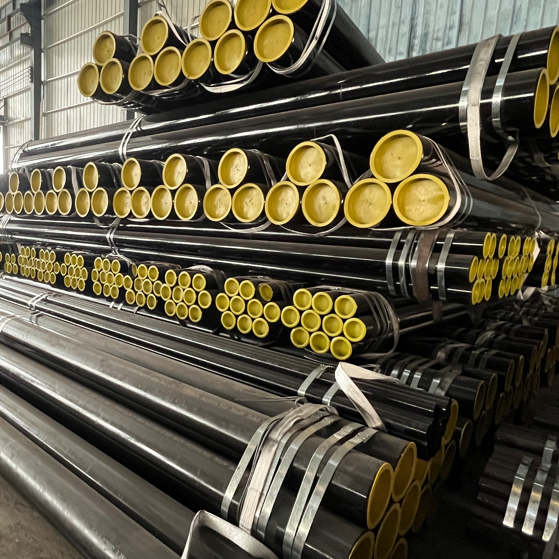The uneven wall thickness of the ASTM A53 spiral submerged arc welded steel pipe is mainly reflected in the appearance of spiral uneven wall thickness, linear uneven wall thickness, and thicker and thinner wall thickness at the head and tail. The details are:
One: ASTM A53 SSAW Steel Pipe Uneven wall thickness at the head and tail
Causes: 1) The front end of the ASTM A53 spiral seam submerged arc welded steel tube blank has too large a slope and tortuousness, and the centering hole of the tube blank is not correct, which is easy to cause uneven wall thickness of the tapered steel tube head;
2) The elongation coefficient is too large when piercing, and the roll If the rotating speed is too high, the rolling will be unstable;
3) 3) The steel throwing of the piercing machine will not be stable, which will easily cause uneven wall thickness at the end of the capillary tube.
Two: ASTM A53 SSAW Steel Pipe wall thickness uneven
The causes are: 1) The wall thickness is uneven due to the adjustment of the rolling center line of the piercing machine, the inclination angle of the two rolls is not equal, or the reduction amount before the plug is too small, usually distributed in a spiral shape along the entire length of the tapered steel pipe;
2) During the rolling process, the centering roller is opened too early, the centering roller is not adjusted properly, and the wall thickness is uneven due to the vibration of the ejector rod, which is usually distributed in a spiral shape along the entire length of the tapered steel pipe.
ASTM A53 spiral submerged arc welds steel pipes with uniform wall thickness, beautiful appearance, uniform stress, and more durability. If you have any questions, please feel free to contact us via email: [email protected].
 Why should Seamless steel pipes be epoxy powder coated?
Why should Seamless steel pipes be epoxy powder coated?
 ASTM A106 Thick-walled steel pipe production steps
ASTM A106 Thick-walled steel pipe production steps
 Shengtian Group successfully participated in the Russian Oil and Gas Exhibition
Shengtian Group successfully participated in the Russian Oil and Gas Exhibition
 Is API 5L Black Steel Pipe Good For Air Lines?
Is API 5L Black Steel Pipe Good For Air Lines?